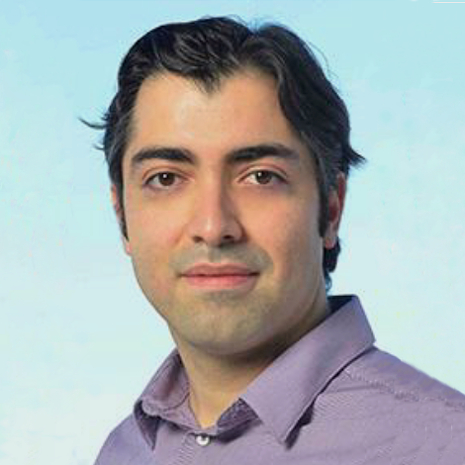Objectives
Our goal is to build hardware vehicles and demonstrations to showcase the strength of multi-platform mm-Wave imaging systems in real-world scenes. We start by identifying and addressing system and implementation challenges in realizing scalable and power efficient sparse LOS MIMO arrays at 140+ GHz frequencies. Then we demonstrate mm-wave silicon and packaging capabilities by realizing robust line-of-sight THz MIMO links using cost-effective frontends as well as efficient analog processing.
Approach
A core enabling technology for the realization of large mm-wave arrays is efficient mm-wave distribution. We study the design of low-loss, efficient and flexible mm-wave distribution networks using flexible dielectric waveguide. We also link the distribution network design to our custom mm-wave packages, designed to interface with either low-loss mm-wave distribution links or direct free space radiation. To complete the picture of our proposed multi-platform imaging system, we Investigate different applications of classical and data-driven algorithms for imaging data, to be used on our evaluation testbed for mm-wave data capture and analysis.
We collaborate with Prof. Madhow from UCSB for analysis and design of robust mm-wave receivers for LOS MIMO applications, as well as to provide hardware vehicles and testbeds for their algorithms.
Accomplishments
We have designed and measured an efficient mm-wave distribution link over large aperture using low-loss DWG networks. The link runs at a carrier frequency of 130GHz, and carries more than 30Gbps of QPSK data over a 1-meter distance. We have also design planar coupling structures for chip-to-chip, board-to-board and chip-to-air interfaces at mm-wave frequencies.
Team Leader
Amin Arbabian (S’06–M’12) received the Ph.D. degree in electrical engineering and computer science from the University of California at Berkeley (UC Berkeley), Berkeley, CA, USA, in 2011. In 2007 and 2008, he was part of the Initial Engineering Team, Tagarray, Inc., Palo Alto, CA, USA. He was with the Qualcomm’s Corporate Research and Development Division, in 2010, where he designed circuits for next-generation ultra-low power wireless transceivers. In 2012, he joined Stanford University, Stanford, CA, USA, as an Assistant Professor of electrical engineering, where he is currently a School of Engineering Frederick E. Terman Fellow. His current research interests include high-frequency circuits, systems and antennas, medical imaging, and ultra-low power sensors.
Dr. Arbabian was a recipient or a co-recipient of the 2015 NSF CAREER Award, the 2014 DARPA Young Faculty Award, the 2013 IEEE International Conference on Ultra-Wideband Best Paper Award, the 2013 Hellman Faculty Scholarship, the 2010 IEEE Jack Kilby Award for Outstanding Student Paper of the International Solid-State Circuits Conference, two-time Second Place Best Student Paper Award at the 2008 and 2011 Radio-Frequency Integrated Circuits (RFIC) Symposium, the 2009 Center for Information Technology Research in the Interest of Society at UC Berkeley Big Ideas Challenge Award and the UC Berkeley Bears Breaking Boundaries Award, and the 2010– 2011 and 2014–2015 Qualcomm Innovation Fellowship. He currently serves on the TPC for the European Solid-State Circuits Conference and the RFIC Symposium.
Publications
S. Hor, N. Poole, & A. Arbabian, “Single-Snapshot Pedestrian Gait Recognition at the Edge: A Deep Learning Approach to High-Resolution mmWave Sensing,” presented at the 2022 IEEE Radar Conference (RadarConf22), New York City, NY, March 21-25, 2022.
J. Zhang, S. Ahmed, & A. Arbabian, “Effects of Reference Frequency Harmonic Spurs in FMCW Radar Systems,” presented at the 2021 IEEE Radar Conference (RadarConf21), Atlanta, GA, May 7-14, 2021.
M. Sawaby, A. Arbabian, C. Jany, B. Grave, S. Kananian, C. Chen, P. Calascibetta, & F. Gianesello, “A Fully Integrated 32 Gbps 2x2 LoS MIMO Wireless Link with UWB Analog Processing for Point-to-Point Backhaul Applications,” presented at the 2020 IEEE Radio Frequency Integrated Circuits Symposium (RFIC), Los Angeles, CA, August 4-6, 2020.
M. Sawaby, N. Dolatsha, B. Grave, C. Chen, and A. Arbabian, “A Fully Packaged 130-GHz QPSK Transmitter With an Integrated PRBS Generator,” IEEE Solid-State Circuits Letters, vol. 1, no. 7, pp. 166–169, 2018
